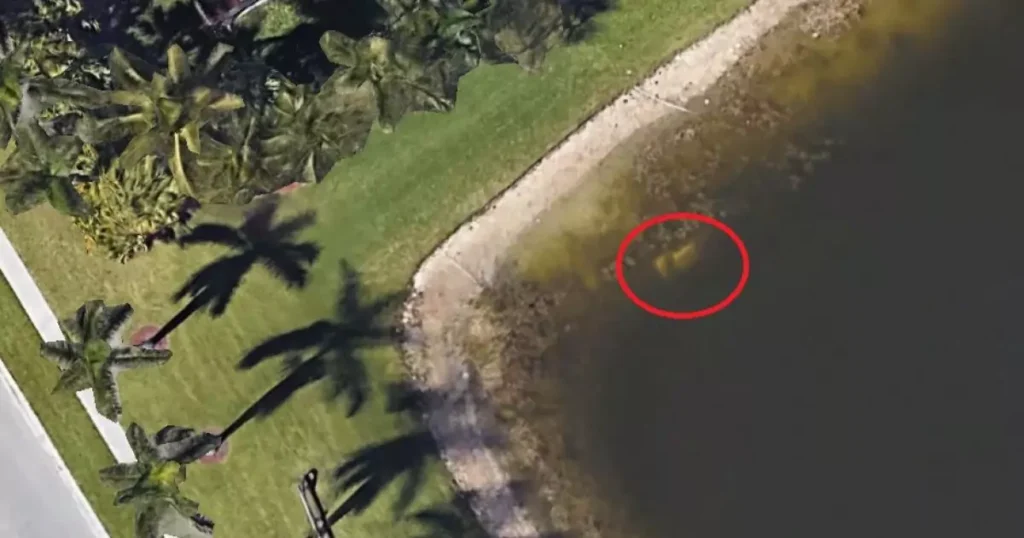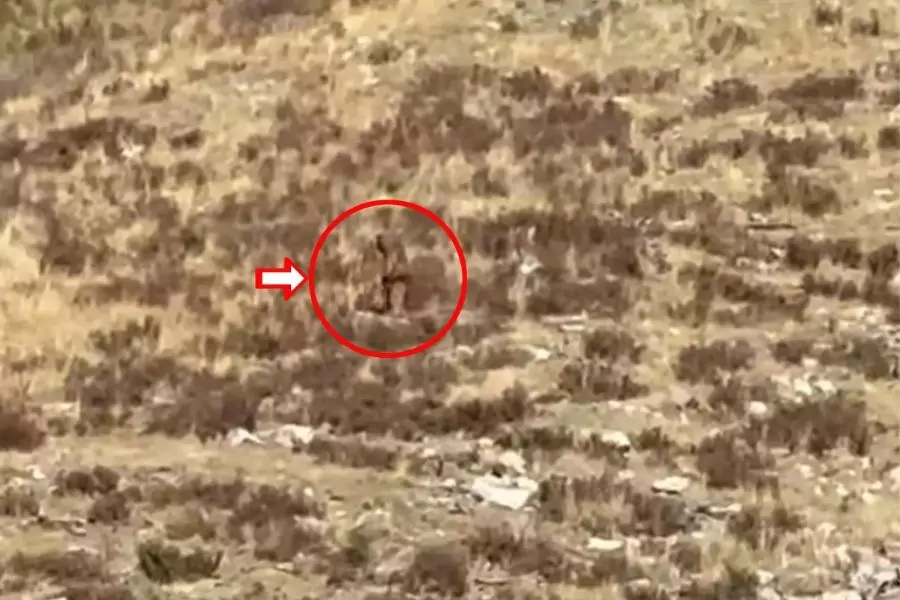
On August 9th, the world was shaken by the news of a tragic passenger plane crash in São Paulo, Brazil. The VoePass Linhas Aéreas Flight 2283, a routine flight from Cascavel in Paraná to Guarulhos International Airport, ended in disaster when the aircraft fell from the sky, killing all 62 people on board. As investigators work to piece together the events leading up to this catastrophic accident, new details have begun to surface, shedding light on the moments before the crash and the potential causes behind it.
The Final Moments Before the Crash
Flight 2283 was a twin-engine turboprop ATR 72-500, a type of aircraft commonly used for short regional flights. Onboard were 58 passengers and four crew members, all of whom tragically lost their lives when the plane spiraled out of control and crashed into the small town of Vinhedo, São Paulo. Shocking footage circulated online, showing the aircraft plummeting from the sky in a terrifying spiral, rather than the more typical nosedive seen in many plane crashes.
According to reports, the aircraft was flying at an altitude of 17,000 feet when it suddenly began losing altitude. Flight tracking data from FlightRadar24 indicated that the plane encountered severe icing conditions between 12,000 and 21,000 feet, which could have played a significant role in the disaster. Severe icing can critically affect an aircraft’s performance by reducing thrust, decreasing lift, and increasing drag—all factors that can lead to a loss of control.

As the plane descended, the black box—a crucial piece of equipment that records flight data and cockpit conversations—captured the final, chilling moments in the cockpit. Brazilian news outlet Globo reported that the recording included the panicked voices of the pilots as they struggled to understand what was happening. The co-pilot, Humberto de Campos Alencar e Silva, was heard frantically asking, “What’s happening?” as the plane began its rapid descent. In a desperate attempt to regain control, he requested an increase in power, hoping it would stabilize the aircraft. Unfortunately, his efforts were in vain.
The recording ends with a loud bang, signaling the moment of impact, followed by the heart-wrenching screams of the passengers. Despite the terrifying audio, no distinctive warning alarms—such as those indicating engine failure, fire, or electrical malfunction—were detected, leaving investigators with more questions than answers.
The Aftermath and Initial Responses
Immediately following the crash, Brazilian President Luiz Inácio Lula da Silva addressed the nation, expressing his deep sorrow for the victims and their families. “I would like everyone to stand up so that we can observe a minute of silence because a plane has just crashed in the city of Vinhedo, in São Paulo, with 58 passengers and four crew members, and it appears they all died,” he stated solemnly. The fact that no one on the ground was injured was a small relief amidst the overwhelming tragedy.
VoePass Linhas Aéreas, the airline operating Flight 2283, issued a statement expressing their profound regret and confirming that all 62 individuals on board had perished. The airline pledged to provide support to the families of the victims and assured the public that a thorough investigation was underway to determine the cause of the crash. “The Company is providing support via telephone at 0800 9419712, available 24 hours a day, providing information to all its passengers, family members, and employees,” the statement read.
Investigating the Cause of the Crash
As with any aviation disaster, the investigation into what caused Flight 2283 to fall from the sky is complex and multifaceted. The Brazilian Air Force’s Aeronautical Accidents Investigation and Prevention Center (CENIPA) is leading the inquiry, with support from international aviation experts and the aircraft’s manufacturer, ATR.
One of the primary focuses of the investigation is the possibility of severe icing. While the aircraft was within the acceptable operational window, severe icing can be unpredictable and dangerous, especially for turboprop aircraft like the ATR 72-500. Ice can accumulate on the wings and other critical surfaces, disrupting airflow and reducing lift. In extreme cases, ice can even form in the engines, leading to a loss of power. Given the flight’s trajectory through an altitude range known for icing, this theory is being thoroughly examined.
Additionally, investigators are scrutinizing the maintenance records of the aircraft, the training and experience of the crew, and the weather conditions at the time of the crash. The black box, now in the hands of CENIPA, is being analyzed to extract every possible detail about the plane’s final moments. This data will be crucial in determining whether mechanical failure, human error, or environmental factors—or a combination of these—led to the tragic accident.

Eyewitness Accounts and Public Reaction
In the aftermath of the crash, eyewitness accounts began to surface, providing a harrowing glimpse into the final moments of Flight 2283. Ana Lucia, a local resident who witnessed the plane’s descent, described the terrifying scene to Sky News. “I thought it was going to fall in our yard,” she said, visibly shaken. “It was scary, but thank God there were no victims among the locals. It seems that the 62 people inside the plane were the real victims, though.”
Another heartbreaking detail emerged when it was revealed that one of the passengers, 23-year-old Rosana Santos Xavier, had sent a selfie to her family shortly before the crash. In the message, she expressed her fear of the flight—a tragic premonition of the disaster that was about to unfold. The image, shared widely on social media, has become a poignant symbol of the lives lost in the crash.
A Look at the ATR 72-500 Aircraft
The ATR 72-500, the aircraft involved in the crash, is a widely used regional airliner developed by the French-Italian aircraft manufacturer ATR. Known for its efficiency and reliability, the ATR 72-500 has been a popular choice for short-haul flights worldwide. The aircraft is powered by two Pratt & Whitney Canada PW127F engines and can accommodate up to 74 passengers, depending on the configuration.
Despite its strong safety record, the ATR 72 series has been involved in several accidents over the years, some of which were linked to icing issues. In 2016, a similar aircraft operated by Tara Air crashed in Nepal under conditions believed to involve severe icing. This history has led investigators to pay close attention to the potential role of icing in the São Paulo crash.
The Global Aviation Community Reacts
The São Paulo plane crash has resonated deeply within the global aviation community, prompting discussions about flight safety, especially concerning regional aircraft like the ATR 72-500. Aviation experts have emphasized the importance of understanding the risks associated with flying through icing conditions and the need for rigorous training for pilots and crew to handle such emergencies.
In light of the crash, several airlines operating ATR aircraft have announced plans to review their procedures for flying in adverse weather conditions. Some have even temporarily grounded their ATR fleets pending further safety checks. This precautionary measure reflects the industry’s commitment to ensuring that all possible factors are addressed to prevent similar tragedies in the future.
The Human Cost of Aviation Disasters
While the technical aspects of the crash investigation are crucial, it’s essential not to lose sight of the human cost of such tragedies. The 62 lives lost in the São Paulo crash represent not just a statistic but a profound loss to families, friends, and communities. In the days following the accident, memorials and vigils have been held across Brazil to honor the victims, with people coming together to grieve and offer support to those affected.
For the families of the victims, the pain of losing loved ones in such a sudden and tragic manner is immeasurable. Many have expressed frustration and a desperate need for answers, hoping that the ongoing investigation will provide some closure. The airline has promised to assist the families in any way possible, including offering financial compensation and psychological support.

The Road to Recovery
As the investigation continues, the aviation industry must grapple with the lessons learned from this tragedy. It’s likely that the findings will lead to changes in regulations, training protocols, and possibly even aircraft design to enhance safety in the future. However, the process of recovery—both for the families of the victims and for the broader aviation community—will take time.
For the families, rebuilding their lives after such a loss will be a long and painful journey. Support from the government, the airline, and the community will be vital in helping them cope with their grief and move forward. Meanwhile, for the aviation industry, this crash serves as a stark reminder of the inherent risks of air travel and the constant need for vigilance and improvement in safety measures.
The Black Box Chilling Sounds from the Final Moments
As investigators continue to piece together the events leading up to the tragic crash of VoePass Linhas Aéreas Flight 2283, the retrieval of the aircraft’s black box has provided critical insights into the final moments before the plane fell from the sky. The black box, which records both flight data and cockpit conversations, has revealed a series of chilling sounds and exchanges between the pilots, painting a harrowing picture of the disaster as it unfolded.
According to reports from Brazilian news outlet Globo, the black box recordings captured the increasingly desperate voices of the pilots as they realized something was terribly wrong. Co-pilot Humberto de Campos Alencar e Silva was heard asking, “What’s happening?” as the plane suddenly began losing altitude. In a frantic attempt to stabilize the aircraft, he called for an increase in power, hoping it would help the plane regain its balance and stop the terrifying descent.
However, despite the crew’s best efforts, the situation rapidly deteriorated. The black box recording, which is filled with the overwhelming noise from the aircraft’s propellers located close to the cockpit, captured no distinctive warning alarms—such as those that would indicate an engine failure, fire, or electrical malfunction. This lack of specific alarms adds to the mystery of what exactly caused the plane to spiral out of control.
The most distressing part of the recording is the sound of the passengers’ terrified screams in the final moments before impact. These chilling sounds, combined with the loud bang that marks the moment the plane hit the ground, provide a heartbreaking reminder of the human tragedy behind the crash. It’s a stark and sobering glimpse into the fear and chaos experienced by those onboard as the plane plummeted toward the earth.
The Importance of the Black Box in the Investigation
The black box recordings are a crucial piece of evidence in the ongoing investigation, offering investigators vital clues about the sequence of events leading up to the crash. While the recordings do not provide a clear-cut explanation for the disaster, they do reveal the pilots’ awareness of the plane’s loss of altitude and their desperate attempts to prevent the crash.
Investigators are carefully analyzing the data to determine if there were any subtle indicators of what went wrong—whether it was a mechanical failure, a sudden environmental factor like severe icing, or something else entirely. The black box data, combined with other pieces of evidence such as flight radar data and eyewitness accounts, will be instrumental in helping to reconstruct the final moments of Flight 2283.
The Psychological Impact of the Black Box Findings
The revelations from the black box have had a profound impact not only on the investigation but also on the families of the victims and the public at large. For the families, hearing about the last moments of their loved ones is incredibly painful, yet it also provides a measure of closure by offering a glimpse into what happened during those final, terrifying seconds.
The chilling nature of the black box recordings has also reignited discussions about the psychological toll of such disasters on both survivors’ families and aviation professionals. The recordings serve as a stark reminder of the human cost of aviation accidents, highlighting the urgent need for continued improvements in flight safety and pilot training.
Moving Forward
As the investigation continues, the findings from the black box will likely play a central role in shaping the conclusions drawn by aviation authorities. These conclusions will not only help explain what happened to Flight 2283 but also guide future safety protocols to prevent similar tragedies from occurring.
For now, the black box stands as a solemn witness to the final moments of Flight 2283—a recording that, while chilling, holds the key to understanding and potentially preventing future disasters. As we await the full results of the investigation, the focus remains on honoring the victims and ensuring that lessons are learned from this devastating event.
A Tragedy That Will Not Be Forgotten
The São Paulo plane crash of August 9th is a tragedy that has left a deep mark on Brazil and the global aviation community. As new details continue to emerge, they paint a picture of a catastrophic event that unfolded in mere moments, leaving no survivors and countless unanswered questions.
While the investigation is still ongoing, the evidence gathered so far—including the chilling black box recordings—suggests that a combination of factors, possibly including severe icing, played a role in the disaster. The full truth may take months or even years to uncover, but what is certain is that the impact of this crash will be felt for a long time.
As we reflect on this tragedy, it’s essential to remember the 62 individuals who lost their lives and to support the families and communities left behind. The lessons learned from this disaster will hopefully lead to improvements in aviation safety, ensuring that future flights are safer for everyone.
In the end, while the technical details of what caused Flight 2283 to fall from the sky are critical, the human stories behind this tragedy are what truly matter. These are the stories of people who were loved.

























































































































